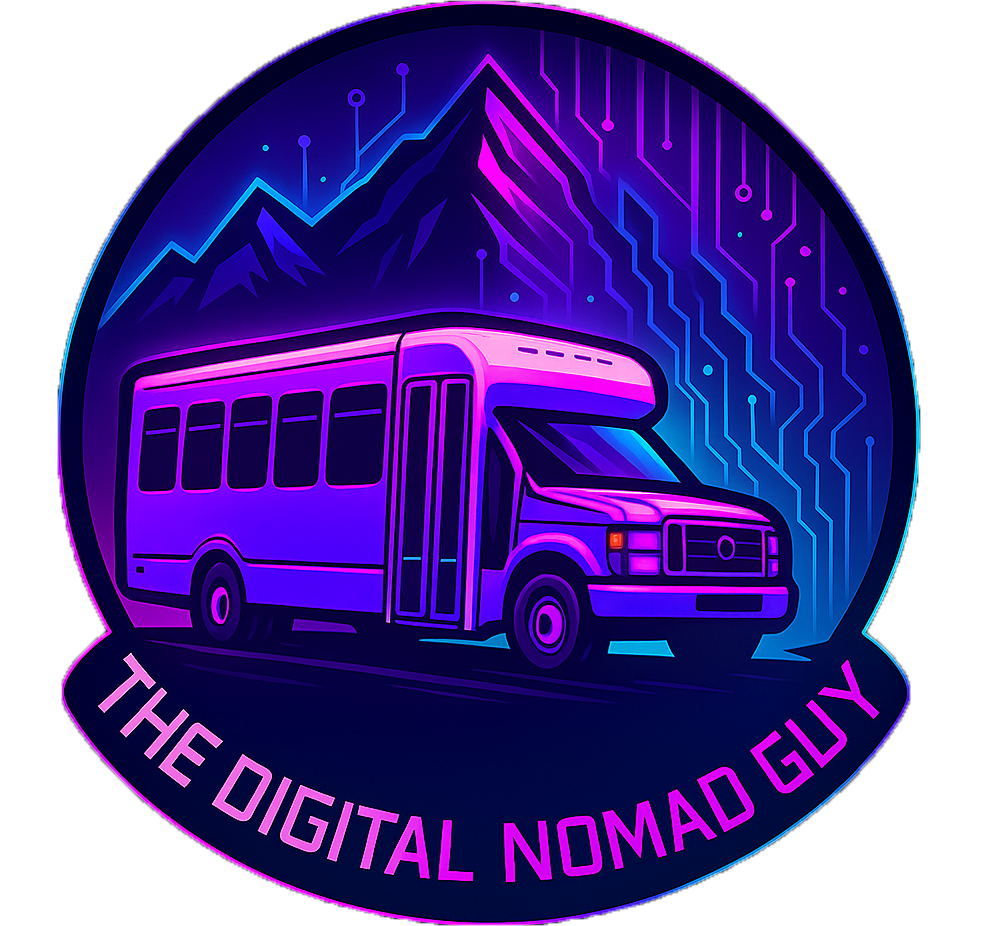The world is changing — fast.
What was once considered “normal” is starting to feel more like a simulation: 9-to-5 commutes, fluorescent-lit offices, debt cycles, endless notifications, and the illusion of freedom behind glowing screens.
But something is shifting. Quietly, millions of people are unplugging from that system — trading in their cubicles for camper vans, their rent for solar panels, and their morning commute for sunrise over the desert.
Welcome to the Digital Nomad Revolution — a movement that isn’t just about remote work, but about redefining what it means to be free in an age of control, automation, and hyperconnectivity.
The Breaking Point: Why People Are Leaving the System Behind
For decades, we’ve been sold the same script: go to school, get a job, climb the ladder, retire someday.
But the cracks are showing. Rising costs, job instability, and algorithmic management have turned “security” into an illusion.
Then came the tipping point — remote work and AI tools shattered the old framework. Suddenly, the world realized:
“I don’t need to be in one place to make a living.”
According to MBO Partners’ 2024 State of Independence report, more than 35 million Americans now identify as digital nomads, a number that continues to grow year over year.
What started as a necessity during lockdowns became a global awakening. The world’s workforce tasted freedom — and there’s no going back.
Many realized that the “system” wasn’t built for creativity or happiness — it was built for compliance. So they began to opt out.
They bought vans. They downsized. They built online businesses. They started living on their own terms.
Want to earn a living while living free? Check out the top remote jobs for digital nomads in 2025.
The Rise of the Digital Nomad
Digital nomads aren’t just travelers with laptops — they’re the architects of a new civilization.
Communities like Nomad List now track where remote workers live, how much they spend, and what quality of life they enjoy — proof that this lifestyle has become a legitimate social movement.
Fueled by technology and a hunger for autonomy, they’re designing lifestyles that blend work, adventure, and sustainability.
They’re coders on beaches, designers in mountain cabins, and creators working from solar-powered buses in the desert.
A decade ago, this was fringe. Today, it’s a movement reshaping culture:
- Major companies now embrace remote work.
- Countries offer digital nomad visas.
- Communities like Skooliepalooza, Northwest Nomads, and Wasteland Weekend bring wanderers together under the stars.
This isn’t escapism — it’s evolution. Humanity is rediscovering mobility as a form of power.
The Tools of Freedom: AI and Automation
The same technology that once trapped people behind screens is now setting them free.
AI tools like ChatGPT, Midjourney, and Sora let creators produce professional work anywhere. Starlink keeps vans connected in the middle of nowhere. Solar panels replace power bills. Automation tools replace full-time teams.
A solo creator can now build an empire from a campsite.
A filmmaker can edit from the mountains.
A writer can publish to millions from a bus in the middle of the desert.
The Digital Nomad Revolution is powered by intelligence, not infrastructure — and that changes everything.
The New Meaning of Success
For generations, success was measured by money, property, and possessions.
Now, it’s being rewritten.
Success is:
- Waking up where you want.
- Working when inspiration hits.
- Creating instead of consuming.
- Owning your time, not renting it to someone else.
In a hyperconnected world, disconnection has become luxury.
We’re entering a time when freedom is the new currency, and nomads are the new entrepreneurs — trading location for liberation, and consumerism for experience.
As one nomad said:
“I gave up stability for aliveness. And I’ve never felt richer.”
The Future of the Movement
This revolution is just beginning.
AI will make remote work easier, automation will handle the repetitive, and renewable energy will make off-grid living more accessible than ever.
In the next decade, we’ll see:
- Self-sustaining mobile communities powered by renewable energy.
- Decentralized income systems through blockchain and digital platforms.
- Digital citizenships that transcend borders.
- And more people realizing that freedom isn’t something you earn — it’s something you choose.
The Digital Nomad Revolution is not a trend. It’s a declaration.
A quiet rebellion against a system that told us what life “should” be.
So pack your laptop. Charge your solar panels. And start writing your own script.
Because the future doesn’t belong to those who stay plugged in —
it belongs to those who learn to live beyond the grid.
What the Digital Nomad Revolution Means for the Future
The Digital Nomad Revolution isn’t about escaping society — it’s about rewriting it.
It’s about realizing that technology doesn’t have to enslave us — it can liberate us.
More people every day are trading conformity for creativity, burnout for balance, and fear for freedom.
And maybe, just maybe — this is how humanity reboots.
Digital Nomad Lifestyle: Frequently Asked Questions
What exactly is a digital nomad?
Can anyone become a digital nomad?
How much does it cost to live as a digital nomad?
Most digital nomads live on $1,500–$3,000 per month, depending on travel style, vehicle setup, and location. Many save money compared to traditional living.

